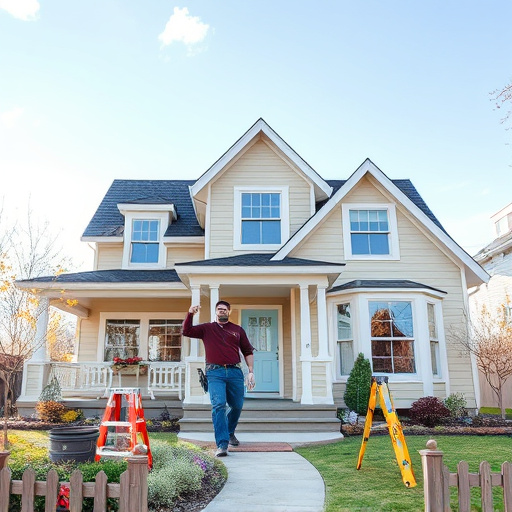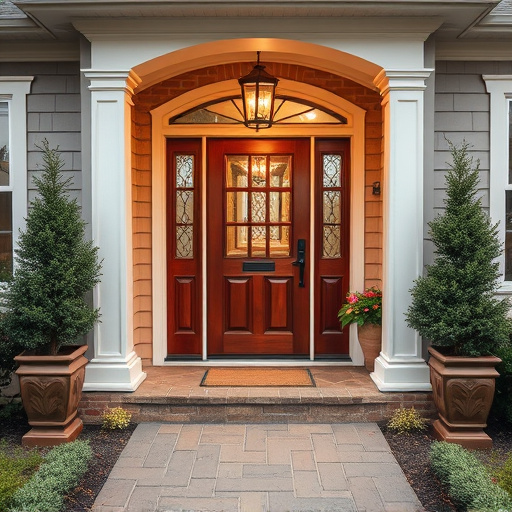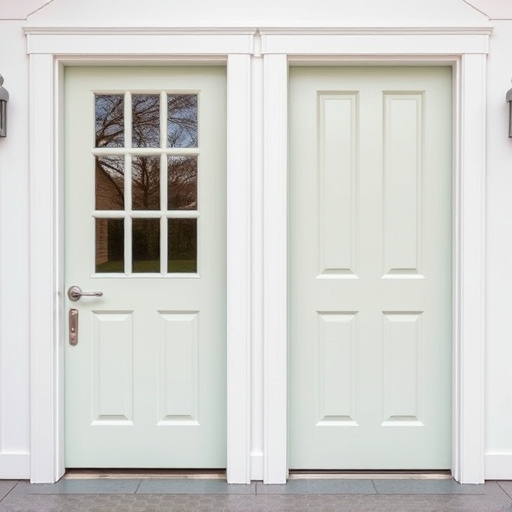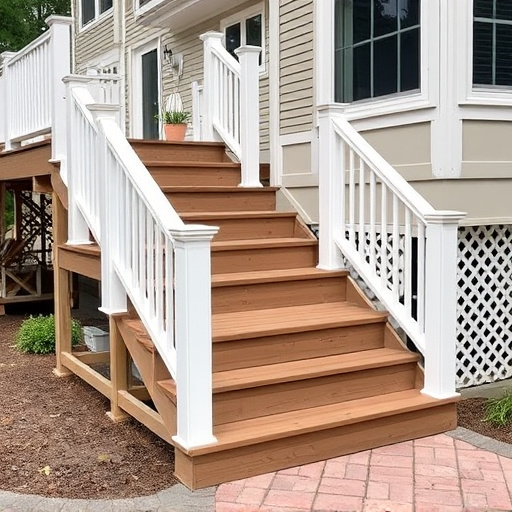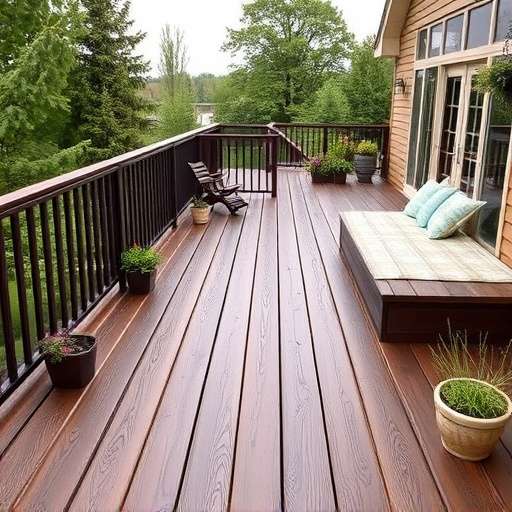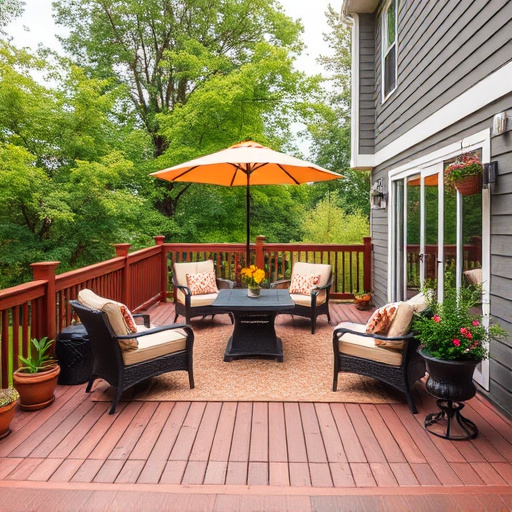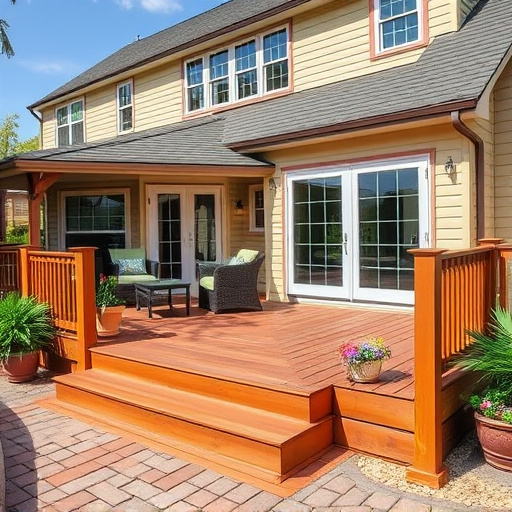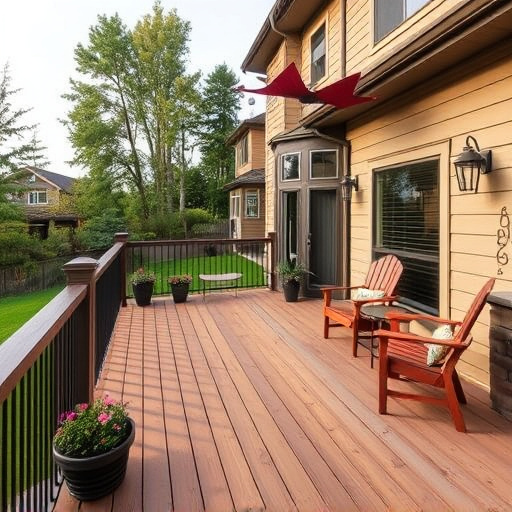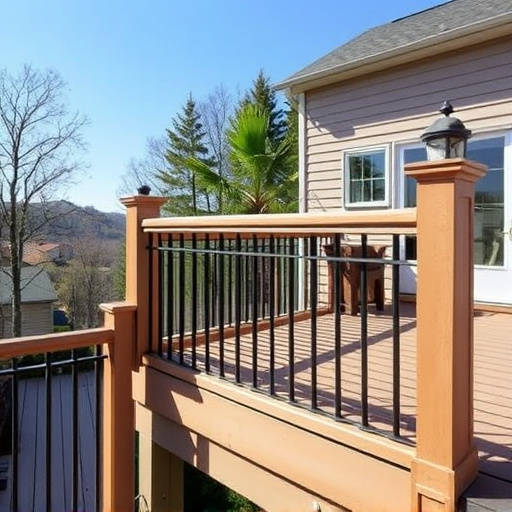Building a raised deck? Choose treated pressure-resistant wood for durability, low maintenance, and superior resistance to rot, decay, & insects. For eco-conscious options, explore recycled plastic or composite materials that offer long lifespans and enhance curb appeal while minimizing environmental impact. Find the best material for your project with these sustainable alternatives.
Constructing a raised deck offers an opportunity to create an outdoor oasis, but selecting the right materials is key to ensuring longevity and aesthetic appeal. This article guides you through the top choices for your dream deck, from traditional wood options like pressure-treated varieties to innovative non-wood materials such as concrete, metal, and brick. We explore the advantages, considerations for maintenance, and weatherproofing techniques for each material, empowering you to make informed decisions for your raised deck project.
- Choosing the Right Wood for Your Raised Deck
- – Advantages and types of pressure-treated wood
- – Sustainability concerns and alternative wood options (e.g., recycled plastic, composite materials)
Choosing the Right Wood for Your Raised Deck
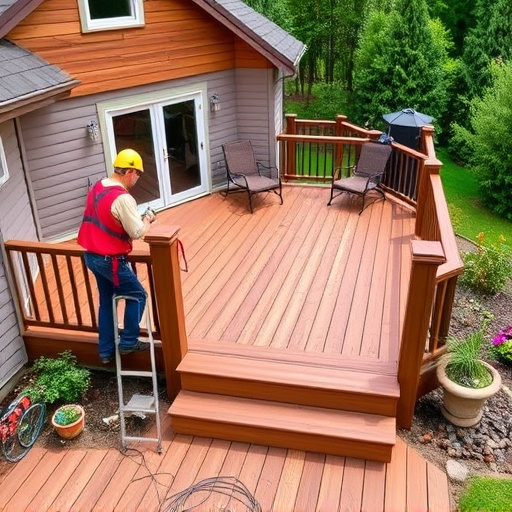
When constructing a raised deck, selecting the right wood is a crucial step that sets the foundation for your outdoor living space’s durability and longevity. The ideal wood should possess superior resistance to rot, decay, and insects while offering excellent stability under varying weather conditions. Treated pressure-resistant wood is often the top choice for raised decks due to its enhanced durability. This type of wood undergoes a specialized treatment process that infuses it with preservatives, ensuring it can withstand exposure to moisture and elements without compromising strength or aesthetics.
Considered a game-changer in deck construction, treated wood offers long-lasting performance, reducing the need for frequent siding repairs or roof replacement, which are common issues with conventional untreated wood. Its resilience makes it an attractive option for homeowners seeking low-maintenance, long-term solutions for their raised decks, ensuring they can enjoy their outdoor spaces without constant worry about structural integrity and appearance.
– Advantages and types of pressure-treated wood
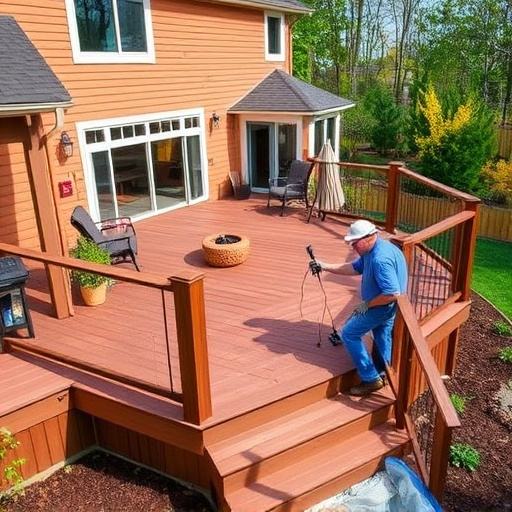
Pressure-treated wood is a popular choice for raised deck construction due to its numerous advantages. This type of wood undergoes a process where chemical preservatives are infused into it, making it highly resistant to rot, decay, and insect damage. As a result, pressure-treated lumber can last for several years without requiring frequent replacement or maintenance, making it a cost-effective option for both commercial roofing and residential exterior home improvements.
There are various types of pressure-treated wood available in the market, each with specific properties tailored to different applications. For instance, yellow pine is commonly used for general decking due to its affordability and strength. Treated cedar offers enhanced beauty and durability, while other options like treated redwood provide superior resistance against harsh environmental conditions. These diverse choices ensure that you can select the best material for your raised deck project, whether it’s for a residential or commercial roofing setup.
– Sustainability concerns and alternative wood options (e.g., recycled plastic, composite materials)
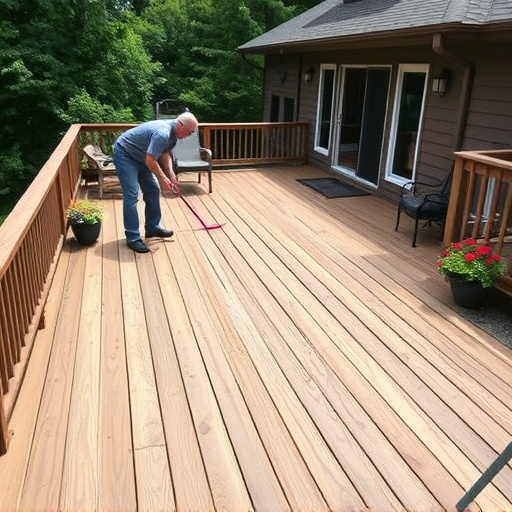
When considering raised deck construction, sustainability is a growing concern for homeowners looking to merge outdoor living with eco-conscious choices. Traditional wood decks have long been associated with deforestation and chemical treatments. However, there are compelling home service solutions for those seeking greener alternatives that don’t compromise quality or durability.
One such option is recycled plastic, which can be molded into decking materials that mimic the look of wood without the environmental impact. Composite materials, made from a blend of wood fibers and plastic, offer another sustainable choice, often requiring less maintenance than traditional wood and contributing to exterior home improvements with longer-lasting results. Even when considering siding and gutters, these innovative deck materials can fit seamlessly into a homeowner’s overall commitment to sustainability and curb appeal.
When constructing a raised deck, selecting the right material is key to ensuring durability, aesthetics, and sustainability. Pressure-treated wood offers exceptional strength and longevity, making it a popular choice for deck builders. However, with growing environmental awareness, alternative options like recycled plastic and composite materials provide eco-friendly solutions without compromising quality. By weighing the pros and cons of each material, you can create a stunning raised deck that blends seamlessly with your outdoor living space while minimizing your environmental footprint.
